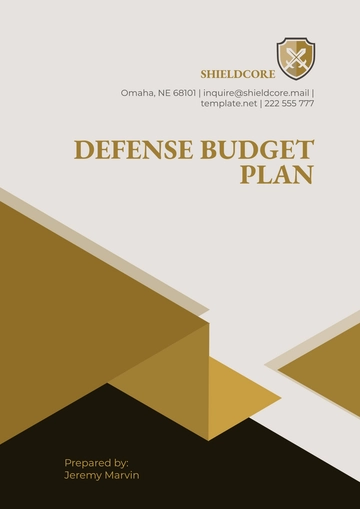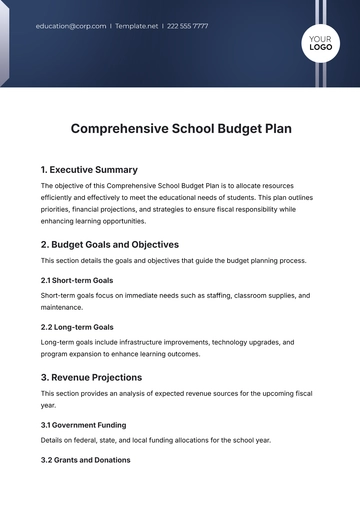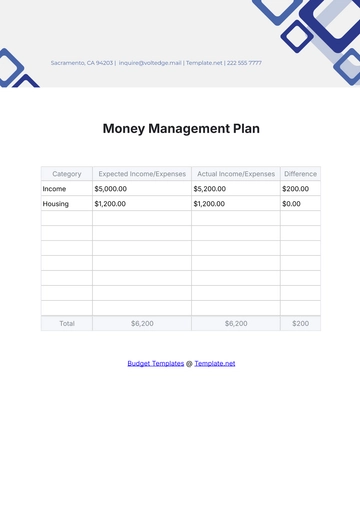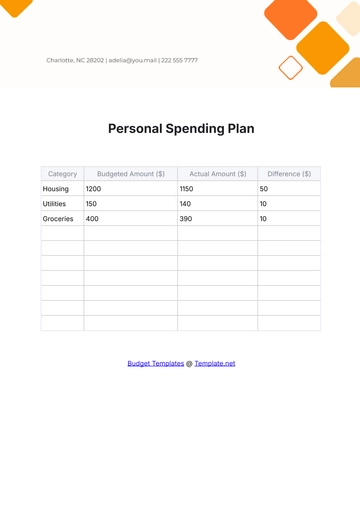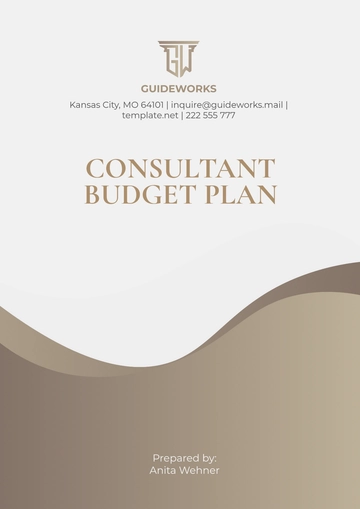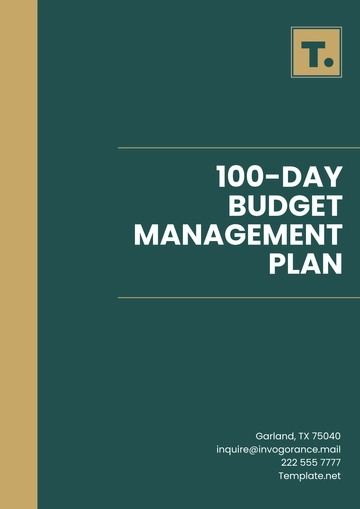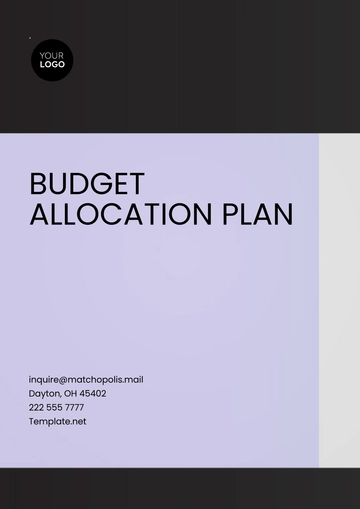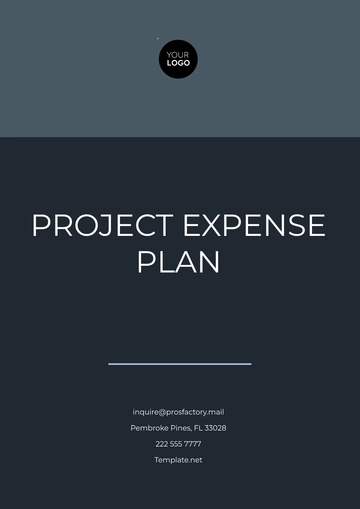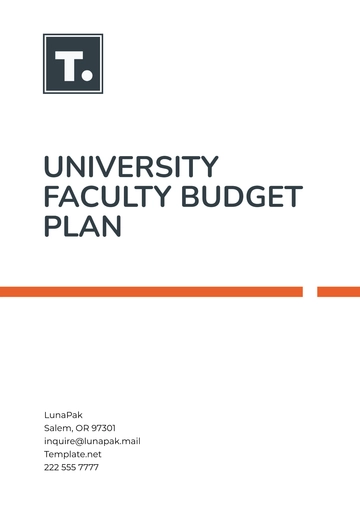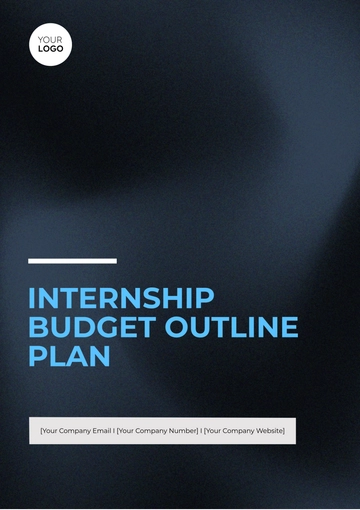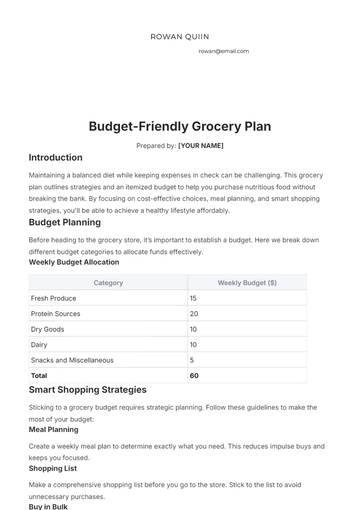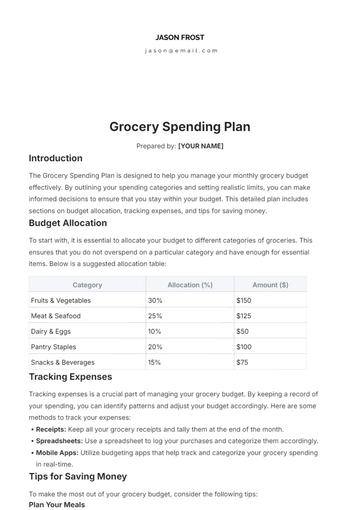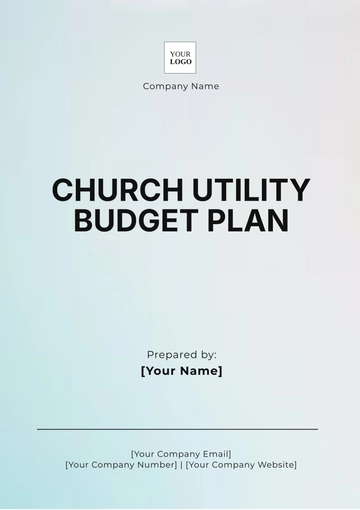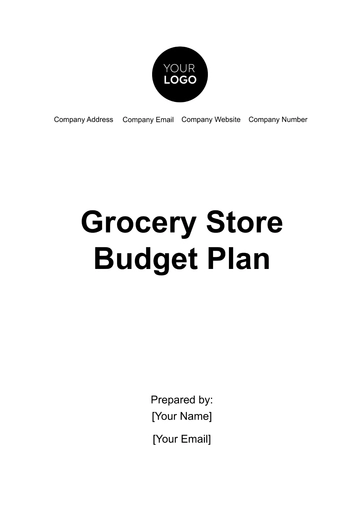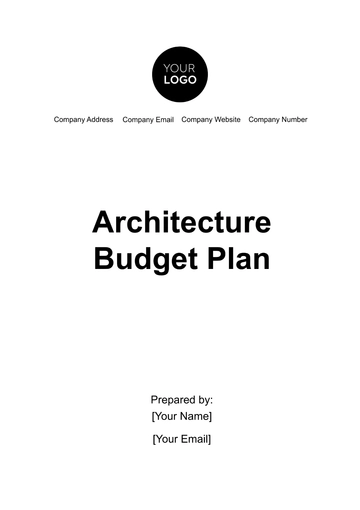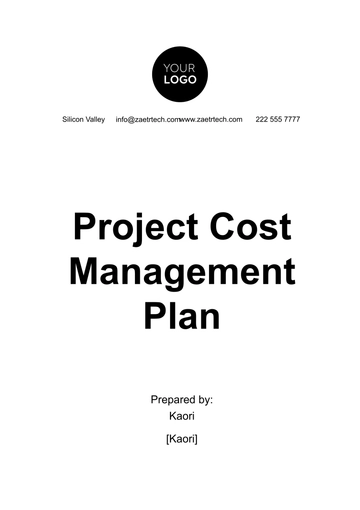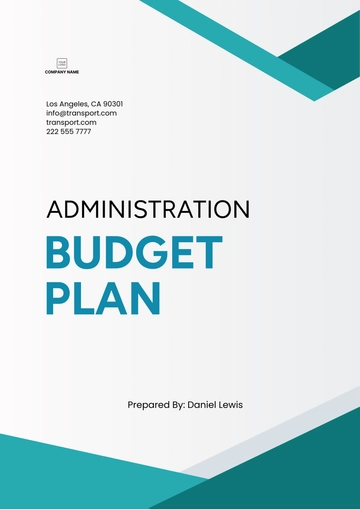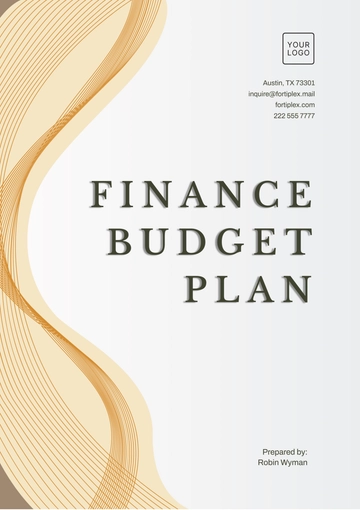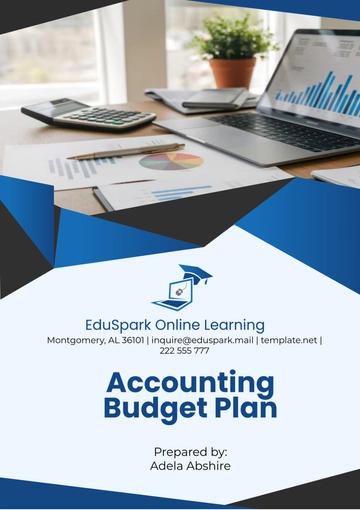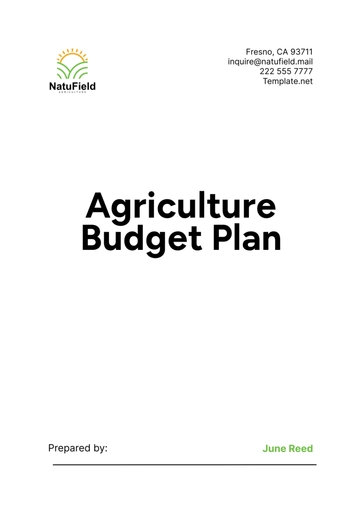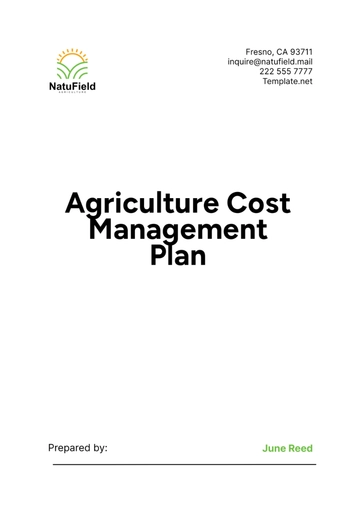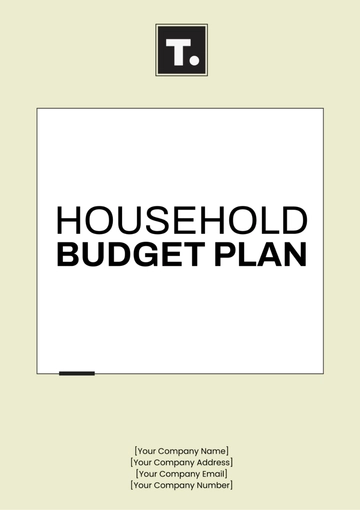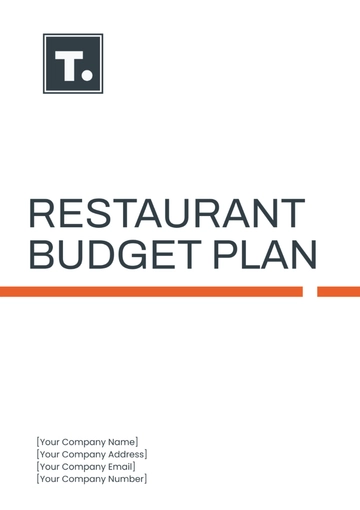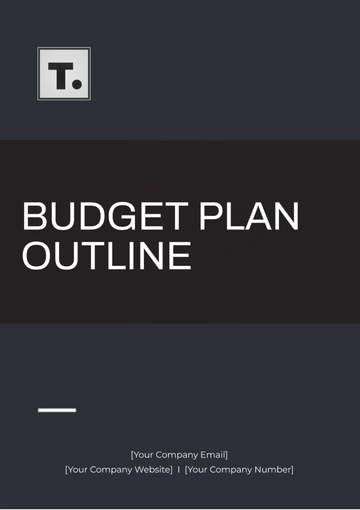Free Project Cost Management Plan
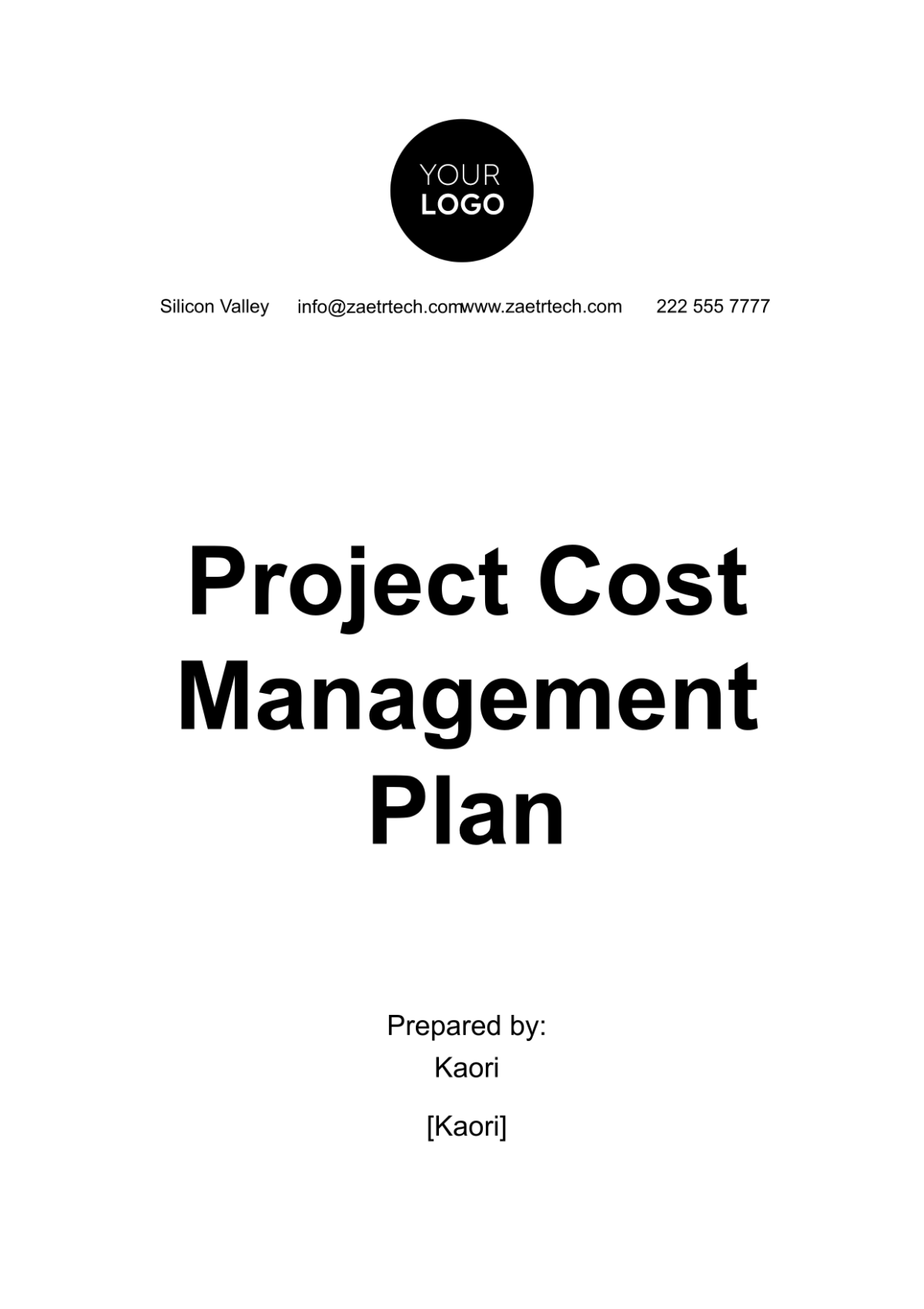
1. Introduction
1.1 Purpose of the Project Cost Management Plan
The Project Cost Management Plan serves as a critical document that outlines the procedures, methodologies, and responsibilities involved in managing costs throughout the lifecycle of the project. It aims to ensure that the project is completed within the approved budget while maximizing the value of the project deliverables. This plan is not merely a formality but a comprehensive framework that guides all project stakeholders in understanding the financial parameters within which they must operate. By detailing the financial strategies employed, the plan fosters accountability and transparency among all team members and stakeholders. This document will be periodically reviewed and updated to reflect any changes in project scope or budgetary constraints, ensuring ongoing relevance and effectiveness.
1.2 Scope of the Project Cost Management Plan
This document applies to all aspects of the project that involve financial planning and management, including:
Cost Estimation: This involves developing accurate cost estimates for resources, materials, and services required to complete project activities. Accurate cost estimation is essential as it lays the foundation for budgeting and financial forecasting.
Cost Budgeting: This includes allocating the estimated costs to various project components, phases, or activities to establish a project budget. Budgeting is critical as it sets spending limits and expectations for financial performance.
Cost Control: This process encompasses monitoring project expenses to prevent cost overruns and ensuring that expenditures align with the project budget. It serves as a mechanism for detecting deviations from the plan early, allowing for timely corrective actions.
1.3 Objectives of the Project Cost Management Plan
The primary objectives of this plan include:
Establishing a Cost Baseline: Creating a reference point for measuring performance and controlling costs is vital. The cost baseline acts as the project's financial foundation, against which all project costs will be tracked and compared.
Cost Tracking and Reporting: Implementing procedures for ongoing tracking of project costs, with regular reporting to stakeholders. Regular reporting helps maintain stakeholder engagement and provides an opportunity to address any emerging issues promptly.
Identifying Variances: Recognizing and analyzing variances from the planned budget to make timely adjustments. This involves not only identifying the variances but also understanding their root causes to prevent recurrence.
Ensuring Stakeholder Accountability: Defining roles and responsibilities to maintain financial discipline among all project participants. By clearly delineating responsibilities, the plan encourages ownership and accountability, leading to more diligent financial management.
2. Cost Management Processes
2.1 Overview of Cost Management Processes
The following key processes will be utilized in the project cost management:
Cost Estimation: This is the process of forecasting the financial resources required to execute project activities.
Cost Budgeting: This involves allocating costs to various project components and establishing an approved budget.
Cost Control: This is the process of monitoring and managing costs to ensure that the project stays within the approved budget.
These processes will be performed in a cyclical manner, allowing for continuous improvement and adjustment throughout the project lifecycle. The iterative nature of these processes ensures that the project team remains agile and responsive to changing project circumstances and market conditions.
2.2 Cost Estimation Process
The cost estimation process involves evaluating the resources required to complete project activities and quantifying associated costs. This requires a comprehensive understanding of the project requirements, the timeline, and the resource availability.
2.2.1 Estimation Techniques
The project will employ the following estimation techniques:
Analogous Estimating: This technique utilizes historical data from similar projects to estimate costs. It is particularly useful in the early stages of a project when detailed information may not be available. While it provides a quick, high-level cost estimate, it may lack precision and should be supplemented with more detailed methods as the project evolves.
Parametric Estimating: This approach involves establishing statistical relationships between historical data and other variables. For example, if the cost per square foot of construction is known, the total cost can be estimated based on the project's square footage. This technique is more accurate than analogous estimating and is often used when there is reliable historical data available.
Bottom-Up Estimating: This method involves breaking down project components into smaller tasks and estimating costs for each task. Each task's estimate is then aggregated to arrive at the overall project cost. This method allows for detailed and accurate estimates, though it can be time-consuming. It is often favored for projects where precision is critical, and the resources required can be distinctly identified.
2.2.2 Cost Estimation Tools
To facilitate the cost estimation process, the following tools will be utilized:
Tool | Purpose |
|---|---|
Microsoft Excel | For calculations and data analysis. Excel provides a flexible platform for building cost models and performing sensitivity analyses. |
Cost Estimation Software | For detailed estimates and scenario analysis. Specialized software allows for more sophisticated modeling and can accommodate complex project requirements. |
Project Management Software | For integrating costs into project plans. This software helps ensure that cost estimates align with project schedules and resource allocations. |
2.2.3 Cost Estimation Deliverables
The outputs of the cost estimation process will include:
Cost Estimates Report: A detailed report outlining all estimated costs, including labor, materials, equipment, and overhead. This report will provide a comprehensive view of projected expenditures and will serve as a basis for budget discussions.
Assumptions and Constraints Document: A document listing all assumptions made during the estimation process and any constraints affecting costs. Clearly documenting assumptions ensures that all stakeholders have a mutual understanding of the basis for the estimates.
Risk Analysis Report: An analysis of potential risks that may impact costs, including strategies to mitigate these risks. This report will highlight potential uncertainties and provide guidance on how to address them effectively.
2.3 Cost Budgeting Process
Cost budgeting involves aggregating the estimated costs to establish an authorized cost baseline for measuring project performance. The following activities will be performed during this process:
2.3.1 Developing the Budget
The budget development process will include:
Cost Aggregation: Summing up all costs from the cost estimates to create a total project budget. This aggregated figure represents the total financial commitment required to complete the project successfully.
Establishing a Cost Baseline: The cost baseline is a time-phased budget that serves as a reference for measuring performance. It will include:
Planned Value (PV): The value of the work planned to be completed at a specific point in time. This measure allows project managers to assess whether the project is on track concerning the planned timeline and budget.
Earned Value (EV): The value of work actually completed at a specific point in time. This metric provides insights into the project's progress and performance against the established baseline.
Actual Cost (AC): The actual costs incurred for the work completed at a specific point in time. Tracking AC is essential for identifying variances from the budget and implementing corrective actions.
Budget Component | Estimated Cost ($) | Planned Value (PV) ($) | Earned Value (EV) ($) | Actual Cost (AC) ($) |
|---|---|---|---|---|
Labor | [50,000] | [10,000] | [5,000] | [6,000] |
Materials | [30,000] | [5,000] | [4,000] | [4,500] |
Equipment | [20,000] | [5,000] | [3,000] | [3,500] |
Overhead | [10,000] | [2,000] | [1,500] | [2,000] |
Total | [110,000] | [22,000] | [13,500] | [16,000] |
2.3.2 Budget Approval Process
The budget approval process includes the following steps:
Presentation of Budget: The project manager will present the budget to stakeholders, including executives and financial sponsors. This presentation should clearly articulate the rationale behind the budget and how it aligns with the project’s objectives.
Feedback and Revisions: Collect feedback from stakeholders and make necessary revisions to the budget. Open dialogue during this stage ensures that all concerns are addressed and helps build consensus around the financial plan.
Formal Approval: Obtain formal sign-off from stakeholders, indicating acceptance of the budget. This approval serves as a commitment from all parties to adhere to the established financial guidelines.
2.4 Cost Control Process
Cost control is the ongoing process of monitoring project expenses and performance against the budget to ensure project success. The key activities involved in this process include:
2.4.1 Monitoring Project Costs
The following methods will be employed to monitor project costs:
Regular Reporting: Prepare monthly cost reports detailing expenditures against the budget, including variance analysis. These reports will serve as a communication tool to keep stakeholders informed of the project's financial status.
Earned Value Management (EVM): Utilize EVM to assess project performance and predict future performance trends based on current data. By comparing the planned and actual progress, the project team can identify potential issues before they escalate.
Performance Indicator | Value ($) | Calculation |
|---|---|---|
Cost Performance Index (CPI) | [0.82] | EV / AC = [13,500] / [16,000] |
Schedule Performance Index (SPI) | [0.61] | EV / PV = [13,500] / [22,000] |
Change Management Process: Implement a structured process for managing changes to the budget, including formal change requests and approvals. This ensures that any alterations to the project scope or budget are adequately documented and approved by relevant stakeholders.
2.4.2 Variance Analysis
Conduct variance analysis to identify discrepancies between planned and actual costs. Variance analysis will involve:
Identifying Variances: Determine the root causes of cost variances by comparing planned and actual costs. This analysis will help pinpoint specific areas where costs exceeded expectations and why.
Corrective Actions: Develop and implement corrective actions to address identified variances. These actions may include adjusting resource allocations, revising budgets, or altering project timelines to realign costs with expectations.
2.5 Performance Reporting
Performance reporting is a critical component of the cost control process. It provides stakeholders with insights into project financial status and informs decision-making. The reporting process will encompass:
Monthly Financial Reports: Distributing detailed reports that highlight key performance indicators, including CPI, SPI, and budget variances. These reports should also include a narrative that explains variances and the actions taken to address them.
Stakeholder Reviews: Organizing monthly meetings to review financial performance and discuss any challenges or adjustments needed. This collaborative approach fosters transparency and allows for input from various stakeholders, ensuring that all voices are heard in the decision-making process.
3. Roles and Responsibilities
3.1 Project Team Responsibilities
Clearly defined roles and responsibilities will enhance accountability and streamline the cost management process. The following roles will be established within the project team:
Role | Responsibilities |
|---|---|
Project Manager | Overall financial management, budget approval, and reporting. |
Financial Analyst | Cost estimation, variance analysis, and budget tracking. |
Project Scheduler | Integrating costs with project schedules and tracking timelines. |
Procurement Specialist | Managing supplier contracts and monitoring material costs. |
3.2 Stakeholder Responsibilities
In addition to the project team, stakeholders will also have defined responsibilities related to cost management:
Stakeholder | Responsibilities |
|---|---|
Executive Sponsor | Budget approval and high-level oversight. |
Project Steering Committee | Providing strategic direction and support for cost decisions. |
Finance Department | Supporting budget development and ensuring financial compliance. |
4. Risk Management
4.1 Risk Identification
Identifying potential risks that could impact project costs is a fundamental aspect of the cost management plan. Risks can arise from various sources, including market fluctuations, regulatory changes, and project scope changes. The project team will conduct a thorough risk identification process that includes:
Brainstorming Sessions: Engaging team members in discussions to identify potential risks based on their experiences and expertise.
Expert Interviews: Consulting with subject matter experts to uncover risks that may not be immediately apparent. These interviews can provide valuable insights and help create a comprehensive risk profile.
Risk Checklists: Utilizing pre-existing checklists based on previous projects to identify common risks that may be relevant to the current project.
4.2 Risk Analysis and Mitigation Strategies
Once risks are identified, the project team will analyze each risk’s likelihood and impact, followed by developing mitigation strategies. This systematic approach will ensure that the project is prepared for unforeseen events. The following strategies will be employed:
Contingency Reserves: Allocating a percentage of the budget for unforeseen expenses or risks is crucial. This reserve will provide a financial cushion to absorb unexpected costs and keep the project on track.
Regular Reviews: Conducting regular risk assessments throughout the project lifecycle will help identify new risks and assess their impact. This proactive approach ensures that the project team can respond swiftly to emerging challenges.
Risk Response Plans: Developing specific response plans for high-impact risks, detailing how the project team will address them should they materialize. These plans will include triggers that prompt actions and identify responsible individuals for executing the response.
Risk Category | Risk Description | Likelihood | Impact | Mitigation Strategy |
|---|---|---|---|---|
Market Risks | Rising material costs | High | High | Lock in prices with suppliers; establish contracts. |
Resource Risks | Skilled labor shortages | Medium | High | Train existing staff; hire temporary labor as needed. |
Scope Creep | Additional project features | High | Medium | Implement a formal change control process. |
5. Performance Measurement
5.1 Key Performance Indicators (KPIs)
To effectively measure project performance against cost management objectives, the following KPIs will be tracked:
KPI | Definition | Target Value |
|---|---|---|
Cost Performance Index (CPI) | Measures cost efficiency (EV/AC) | [1.0] |
Schedule Performance Index (SPI) | Measures schedule efficiency (EV/PV) | [1.0] |
Budget Variance (BV) | Measures variance from budget (EV - AC) | [0] |
Estimate at Completion (EAC) | Forecast of total project costs at completion | TBD |
These KPIs will provide valuable insights into the project’s financial health and enable informed decision-making. Regular monitoring of these indicators allows the project team to identify trends, assess performance, and make necessary adjustments to keep the project on track.
5.2 Reporting and Communication
Effective reporting and communication with stakeholders are critical to maintaining transparency and accountability. The reporting process will include:
Monthly Cost Reports: A comprehensive summary of actual costs versus the budget, highlighting variances and corrective actions. These reports will provide stakeholders with a clear understanding of the project's financial status and any necessary interventions.
Stakeholder Meetings: Monthly meetings with stakeholders to review financial performance and address concerns. These meetings will facilitate open dialogue and ensure that all stakeholders remain informed and engaged throughout the project.
Ad Hoc Reports: Providing additional reports as needed to address specific stakeholder inquiries or emerging issues. This flexibility in reporting ensures that stakeholders have access to relevant information whenever required.
6. Conclusion
The Project Cost Management Plan is essential for ensuring that the project is completed on time and within budget while maximizing the value delivered to stakeholders. By systematically implementing the outlined processes for cost estimation, budgeting, and control, [Your Company Name] aims to manage project costs effectively and minimize financial risks. Regular monitoring, variance analysis, and stakeholder engagement will support project success and ensure that financial objectives align with overall project goals. The proactive approach to risk management and performance measurement will further enhance the project's resilience, enabling the team to navigate challenges effectively and adapt to changing circumstances.
- 100% Customizable, free editor
- Access 1 Million+ Templates, photo’s & graphics
- Download or share as a template
- Click and replace photos, graphics, text, backgrounds
- Resize, crop, AI write & more
- Access advanced editor
Manage project costs effectively with the Project Cost Management Plan Template from Template.net. This customizable template helps you plan, monitor, and control project expenses. Editable in our AI Editor Tool, it includes sections for cost estimation, budgeting, and tracking. Download now to keep your project budget under control!
You may also like
- Finance Plan
- Construction Plan
- Sales Plan
- Development Plan
- Career Plan
- Budget Plan
- HR Plan
- Education Plan
- Transition Plan
- Work Plan
- Training Plan
- Communication Plan
- Operation Plan
- Health And Safety Plan
- Strategy Plan
- Professional Development Plan
- Advertising Plan
- Risk Management Plan
- Restaurant Plan
- School Plan
- Nursing Home Patient Care Plan
- Nursing Care Plan
- Plan Event
- Startup Plan
- Social Media Plan
- Staffing Plan
- Annual Plan
- Content Plan
- Payment Plan
- Implementation Plan
- Hotel Plan
- Workout Plan
- Accounting Plan
- Campaign Plan
- Essay Plan
- 30 60 90 Day Plan
- Research Plan
- Recruitment Plan
- 90 Day Plan
- Quarterly Plan
- Emergency Plan
- 5 Year Plan
- Gym Plan
- Personal Plan
- IT and Software Plan
- Treatment Plan
- Real Estate Plan
- Law Firm Plan
- Healthcare Plan
- Improvement Plan
- Media Plan
- 5 Year Business Plan
- Learning Plan
- Marketing Campaign Plan
- Travel Agency Plan
- Cleaning Services Plan
- Interior Design Plan
- Performance Plan
- PR Plan
- Birth Plan
- Life Plan
- SEO Plan
- Disaster Recovery Plan
- Continuity Plan
- Launch Plan
- Legal Plan
- Behavior Plan
- Performance Improvement Plan
- Salon Plan
- Security Plan
- Security Management Plan
- Employee Development Plan
- Quality Plan
- Service Improvement Plan
- Growth Plan
- Incident Response Plan
- Basketball Plan
- Emergency Action Plan
- Product Launch Plan
- Spa Plan
- Employee Training Plan
- Data Analysis Plan
- Employee Action Plan
- Territory Plan
- Audit Plan
- Classroom Plan
- Activity Plan
- Parenting Plan
- Care Plan
- Project Execution Plan
- Exercise Plan
- Internship Plan
- Software Development Plan
- Continuous Improvement Plan
- Leave Plan
- 90 Day Sales Plan
- Advertising Agency Plan
- Employee Transition Plan
- Smart Action Plan
- Workplace Safety Plan
- Behavior Change Plan
- Contingency Plan
- Continuity of Operations Plan
- Health Plan
- Quality Control Plan
- Self Plan
- Sports Development Plan
- Change Management Plan
- Ecommerce Plan
- Personal Financial Plan
- Process Improvement Plan
- 30-60-90 Day Sales Plan
- Crisis Management Plan
- Engagement Plan
- Execution Plan
- Pandemic Plan
- Quality Assurance Plan
- Service Continuity Plan
- Agile Project Plan
- Fundraising Plan
- Job Transition Plan
- Asset Maintenance Plan
- Maintenance Plan
- Software Test Plan
- Staff Training and Development Plan
- 3 Year Plan
- Brand Activation Plan
- Release Plan
- Resource Plan
- Risk Mitigation Plan
- Teacher Plan
- 30 60 90 Day Plan for New Manager
- Food Safety Plan
- Food Truck Plan
- Hiring Plan
- Quality Management Plan
- Wellness Plan
- Behavior Intervention Plan
- Bonus Plan
- Investment Plan
- Maternity Leave Plan
- Pandemic Response Plan
- Succession Planning
- Coaching Plan
- Configuration Management Plan
- Remote Work Plan
- Self Care Plan
- Teaching Plan
- 100-Day Plan
- HACCP Plan
- Student Plan
- Sustainability Plan
- 30 60 90 Day Plan for Interview
- Access Plan
- Site Specific Safety Plan
